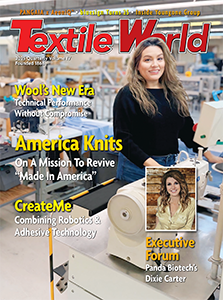 LEIPZIG, Germany — September 4, 2025 — Traditionally, assessing fabric hand feel and wearing comfort has been highly subjective, making collaboration along the textile supply chain difficult. The TSA changes this by delivering objective, reproducible data on key parameters such as surface softness, surface smoothness, compressibility, stretch, friction, and thermal behavior. This enables manufacturers, mills, and brands to establish a common language for fabric quality, ensuring consistency and reliability.
LEIPZIG, Germany — September 4, 2025 — Traditionally, assessing fabric hand feel and wearing comfort has been highly subjective, making collaboration along the textile supply chain difficult. The TSA changes this by delivering objective, reproducible data on key parameters such as surface softness, surface smoothness, compressibility, stretch, friction, and thermal behavior. This enables manufacturers, mills, and brands to establish a common language for fabric quality, ensuring consistency and reliability.
By digitizing tactile data and linking it to the cloud-based Virtual Haptic Library, the TSA helps textile developers:
- Save time and costs in R&D by reducing sample shipping, iterations, and approval delays – cutting development cycles from up to 20 weeks to as little as two.
- Improve efficiency across sourcing and production workflows through digital comparison instead of costly lab dip submittals.
- Boost sustainability by minimizing sample waste and reducing transport-related emissions.
- Ensure quality consistency by detecting subtle variations between fabric batches that are otherwise nearly impossible to recognize by touch.
The system also integrates seamlessly with Product Lifecycle Management (PLM), Enterprise Resource Planning (ERP), and quality management systems, supporting the textile industry’s shift towards digitization, automation, and data-driven decision-making. “Turning subjective impressions into objective data is a critical competitive advantage,” says Alexander Gruener. “With the TSA and our Virtual Haptic Library, we provide a scalable solution that accelerates development, improves communication, and supports sustainability goals across the global textile supply chain.”
Visitors to the Amsterdam Textile Show 2025 will have the opportunity to experience live demonstrations of the TSA in Hall 11 at booth no. W103 and learn how emtec Electronic is shaping the future of digital fabric evaluation.
Posted: September 8, 2025
Source: emtec Electronic GmbH




